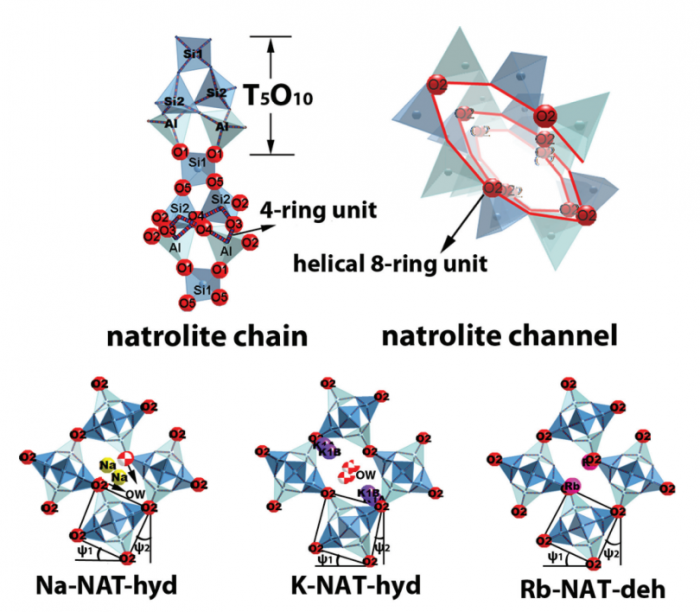“Spectroscopic characterization of alkali-metal exchanged natrolites”
- Authors
D. Liu, Z. Liu, Y. Lee, D. Seoung, Y. Lee*
- Journal
American Mineralogist
Vol.97, pp.419-424, 2012.02 - DOI
Abstract
Synchrotron infrared (IR) and micro-Raman spectroscopic studies have been performed on zeolite natrolites as a function of the non-framework composition at ambient conditions. This establishes the spectroscopic characterization of the ion-exchanged natrolites in the alkali-metal series both in the as-prepared hydrated (M-NAT-hyd, M = Li, Na, K, Rb, and Cs) and some stable dehydrated forms (MNAT- deh, M = Rb and Cs). The former series exhibits non-framework cation-size dependent opening of the helical channels to span ca. 21° range in terms of the chain rotation angle, ψ (or ca. 45° range in terms of the chain bridging angle, T-O2-T). For these hydrated phases, both IR and Raman spectra reveal that the degree of the red-shifts in the frequencies of the helical 8-ring channel as well as the 4-ring unit is proportional to the ionic radius of the non-framework cations. Linear fits to the data show negative slopes of -55.7 from Raman and -18.3 from IR in the 8-ring frequencies and ionic radius relationship. The spectroscopic data are also used to identify the modes of the dehydration-induced “collapse” of the helical 8-ring channels as observed in the stable anhydrous Rb-NAT-deh and Cs- NAT-deh. In addition, we demonstrate that the spectroscopic data in the hydrated series can be used to distinguish different water arrangements along the helical channels based on the frequency shifts in the H-O-H bending band and the changes in the O-H stretching vibration modes.












